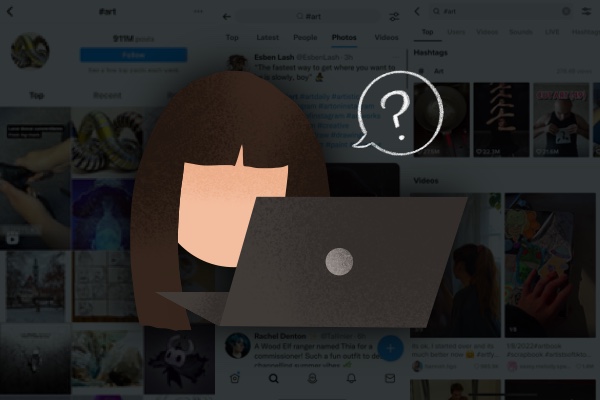What’s the best social media platform to post your art on? Let’s weigh in!
Social media has not been the most forgiving to artists these past few years with many platforms changing their algorithms and systems, making it incredibly difficult for an artist aspiring to showcase their work to a large audience online to decide which mainstream platform (i.e. platforms that are not specifically made for art like DeviantArt or Artstation) to focus on publishing their art in. To make it a bit easier for those just starting or those thinking about branching out, here is a list of the biggest pros and cons of each popular social media platform.
Pros: Instagram is a media-based platform, making it supposedly a perfect place to post visual-based artwork. You can post images in different dimensions, different media types such as photos or video and you can share stories of the behind-the-scenes of your work and life so that people interested in you can be updated. Also, Instagram has by far the widest-reaching audience compared to any other platform and you can be found by professional artists and non-artists alike.
Cons: Recently, the Instagram algorithm has prioritized other media to be put in the spotlight over art. Many popular artists on the platform have noticed less engagement in their posts and feeds. It seems to also be a recurring problem that Instagram has been favoring an algorithm more reminiscent of TikTok that showcases more posts based on what the algorithm believes are your interests rather than posts from people that you actually follow.
Pros: Users have the ability to retweet and also see liked tweets from users that they follow, making the possibility of a tweet going viral very likely given that it is liked and/or retweeted by the right person. Also, being an interactive platform, it is a lot easier for artists to interact with their followers within threads of their tweets. Threads are also a great feature for artists to share comics, collections and other content that cannot fit in the original tweet.
Cons: Other than the “media” tab in one’s profile, it can be difficult for users to navigate to find your work as there is no proper sorting or collection system. In addition, the “media” tab can often be saturated with unrelated content such as video links and reaction images if a user actively uses them, making Twitter a tough place to see your art in an organized fashion. Also, given the nature and ease of creating tweets, many artists have spoken about how it is hard for their art to be seen if it is not tweeted at the right time for their followers to interact with it, making reposting and retweeting a common practice.
TikTok
Pros: With the right hashtags and timing, anyone can be popular on TikTok. As the algorithm is (sometimes very scarily) accurate to a user’s interests, your art is very likely to show up for users who would be interested in your work. Especially if you are caught up with the latest trends, tuning your TikToks toward them while they are still relevant can garner you some popularity quite fast.
Cons: As a video-based platform, a quality TikTok requires you to put a decent amount of effort into finding ways to translate your work into an interesting and entertaining video, which is an effort that many artists, especially ones that primarily work in still images, find tedious or too time-consuming. For example, if you wanted to post a timelapse of your painting, then extra work has to be put in to record it and edit the footage and it often completely changes the presentation of the piece.
Pros: Being a community-based platform, you are able to guarantee that those who will see your work will be interested in the genre. For example, posting your surreal artwork in the subreddit r/surrealism will guarantee that your art will be shown to those interested in it.
Cons: Because of its hyperfocus on communities, unless you put in the effort to post your work into the different subreddits that they fit in, they are not able to be viewed by a wider audience, which is something that many artists say helps sustain them, as over time the styles and subject matters that you work in change with you.
Have you found “your” platform? Hopefully, this quick guide has given you a better idea!





















